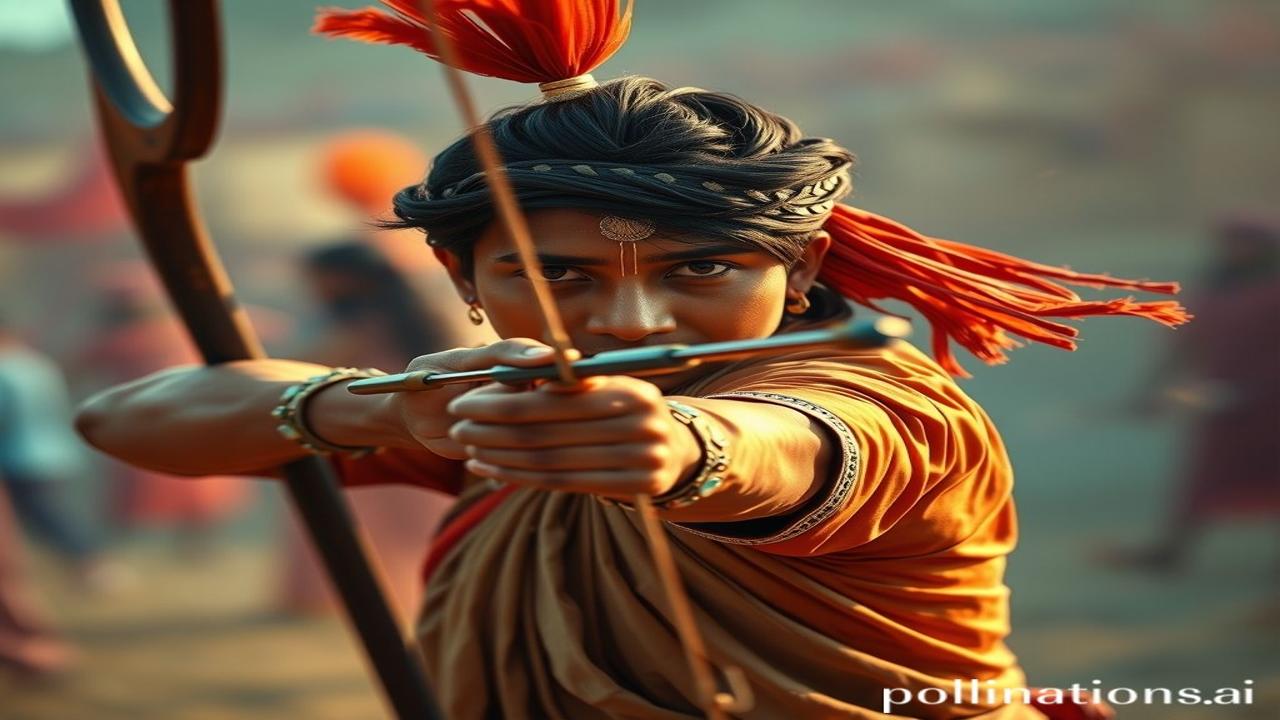Dhanush ki Dori: Tracing Traditional Archery Forms Across States
Kabhi socha hai, uss teer ki awaaz kaisi hogi, jo Maharaja Ranjit Singh ke haathon se chhooti hogi? Imagine the whoosh, the focus, the lakshya unwavering. Waqt ki dhool mein, India ke traditional archery forms ki kahaniyan aise hi chhupi hain – har state mein ek alag dhang, ek alag rang. Let’s unravel them, shall we?
Archery: A Historical and Cultural Tapestry
Traditional archery isn’t just about shooting arrows. It’s an art, a skill, a way of life deeply woven into the fabric of India. From the ancient epics like the Ramayana and Mahabharata, where archery was a symbol of prowess and righteousness, to the battlefields where it was a crucial military tactic, dhanush-ban (bow and arrow) have held immense significance.
Different regions developed their own unique styles and techniques, often influenced by local geography, available materials, and cultural practices. This led to a fascinating diversity in bows, arrows, and shooting methods. Think of it: the bows crafted in the Himalayan regions would be vastly different from those used in the plains of Rajasthan.
Zameeni Sach: People and Their Lives
Imagine a young tribal boy in Nagaland, meticulously crafting his bamboo bow. He spends hours practicing, mimicking the techniques passed down through generations. His grandfather, a revered hunter in the village, teaches him the secrets of aiming, the importance of respecting the forest, and the shakti that resides within the bow.
Or visualize a Rajput warrior in Rajasthan, honing his skills with a composite bow made of horn, wood, and sinew. He trains relentlessly, preparing for the day he might need to defend his kingdom. His arrows are tipped with carefully crafted iron points, each designed for a specific purpose – piercing armor or inflicting maximum damage.
In Manipur, picture the women archers participating in the Thang-Ta martial art. Dressed in vibrant attire, they exhibit incredible grace and precision as they shoot arrows while performing intricate movements. The air is filled with the rhythmic beat of drums and the cheers of the crowd.
Dharohar aur Pehchan: The Echo Today
While modern weaponry has largely replaced traditional archery in warfare, its cultural significance continues to resonate in India. We see glimpses of it in:
- Festivals: Many festivals across India feature archery competitions, reviving ancient traditions and showcasing the skills of local archers. Think of the archery contests during Dussehra celebrations!
- Rituals: In some communities, bows and arrows are still used in religious ceremonies, symbolizing strength, protection, and the triumph of good over evil.
- Art and Handicrafts: Traditional bows and arrows are often displayed as works of art, showcasing the craftsmanship and cultural heritage of the region. You can find beautifully decorated bows adorning walls in homes and museums.
- Modern Archery: India’s growing success in international archery competitions can be partially attributed to the strong foundation laid by these traditional forms.
Mazedar Tathya ya Bhram-Bhanjak: Myth Busting
Log samajhte hain ki archery sirf ek shauk hai… lekin asli sach yeh hai ki, it’s a holistic discipline that combines physical strength, mental focus, and spiritual awareness. It’s about more than just hitting the target; it’s about connecting with your inner self and finding balance.
Another fun fact: Did you know that some traditional bows in India were so powerful that they required two people to draw them?
Drishya aur Bhavnayein: A Sensory Journey
Picture yourself standing in a small village in Arunachal Pradesh. The air is crisp and clean, filled with the scent of pine trees. You hear the rhythmic thwack of bows as archers practice their aim. The colors of their traditional attire – vibrant reds, greens, and yellows – create a stunning contrast against the backdrop of lush green hills. You feel the palpable energy and dedication of these archers, their passion for this ancient art.
Antim Vichar ya Uddharan: A Closing Thought
Lakshya ek, marg anek. (The goal is one, the paths are many.) This simple statement encapsulates the spirit of traditional archery in India. While the techniques and styles may vary from state to state, the underlying principles of focus, discipline, and respect remain the same. These traditions are a valuable part of our cultural heritage, and it is our responsibility to preserve and celebrate them for generations to come.
